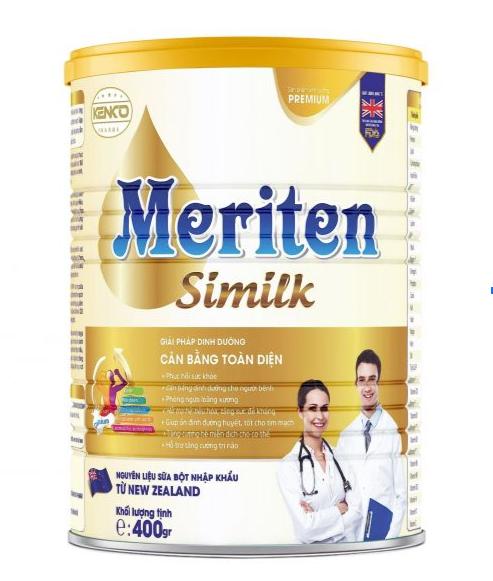Malnourished children should use milk to improve weight
Malnutrition in children is a condition where the body is not provided with enough energy, protein as well as other trace elements to ensure the development of the body. This condition is common in children under 3 years of age. So malnourished children should use what milk to improve weight? Let's follow Hera's information below.
Malnutrition in children is a condition where the body is not provided with enough energy, protein as well as other trace elements to ensure the development of the body. This condition is common in children under 3 years of age. So malnourished children should use what milk to improve weight? Let's follow Hera's information below.

Malnourished children should use milk to replace meals
Causes of malnutrition in children, mothers should pay attention to
Poor weight gain is not a disease, but a symptom, which has many possible causes. Causes of poor weight gain include:
Not consuming an adequate amount of dietary energy (measured in calories) or not consuming the correct combination of proteins, fats, and carbohydrates
Inability to absorb adequate amounts of nutrients
Requires a higher than normal amount of dietary energy (measured in calories)
Poor weight gain can be caused by medical problems, developmental or behavioral problems, lack of adequate food, social challenges at home, or most often a combination of these problems. Common causes of poor weight gain for each age group are described below:
Prenatal – Small for age at birth (known as intrauterine growth restriction); premature birth ; birth defects; prenatal infection; exposure to growth-restricting drugs/toxins during pregnancy (eg, anticonvulsants, alcohol, tobacco smoke, caffeine, street drugs)
Newborn to six months - Poor feeding quality (whether breast- or bottle-fed); incorrect recipe preparation; breastfeeding problems; insufficient amount of food; poor feeding interactions (eg, infant gags or vomits during feeding and caregiver assumes baby is full); neglect; birth defects that affect the child's ability to eat or digest normally; breastfeeding (sometimes related to lack of access, poverty, or failure to understand the infant's dietary needs); milk protein intolerance; problems with the child's mouth/throat that makes it difficult for the child to suck or swallow (eg, cleft lip and palate); medical problems that affect nutrient absorption (cystic fibrosis); medical problems that increase the number of calories needed (congenital heart disease), gastroesophageal reflux
Seven to 12 months - Feeding problems (e.g., struggles between babies and caregivers over what to eat; problems with children's mouths make it difficult for them to adapt to chewing or swallowing foods that can be chewed or swallowed). texture; delaying introduction of solid foods; refusing to eat new foods when first offered so caregivers don't offer them again; caregivers not providing adequate amounts or varieties of solid foods); intestinal parasites; food allergy
Over 12 months - Behavior (eg, picky or selective eater or child easily distracted at mealtimes); diseases; new stress at home (divorce, job loss, new sibling, death in the family, etc.); social factors (breastfeeding is associated with fear of overfeeding, limited food choices, poverty); sensory feeding disorders in children with developmental disorders (eg, autism spectrum disorder); swallowing dysfunction; drinking too much milk or juice; not getting enough food or the right combination of healthy foods; celiac disease; Food allergies…
MERITEN SIMILK - Solutions for malnourished children

Malnourished children should use milk to improve weight
Malnourished children should use what milk to replace meals, supplement nutrients for users, provide energy for people with poor health from 3 years old and above, can be used for feeding by catheter. The product can be used for patients, people after surgery, poor eaters who need nutritional supplements.
With ingredients: Instant milk powder, maltosedextrine, refined milk protein, L-lysine,
Choline, Olive Oil, Soybean Oil Preparation, Fiber (inulin/Fos), Immunoglobulin,
Lactobacillus acidophilus, Bifidobacterium lactis, Pufa, Mufa, Medium Chain
Triglycerides (MCT), Omega 3, Omega 6, mixed vitamins (Retinyl acetate (Vitamin C)
A), Cholecalciferol (Vitamin D3), DL-alpha-Tocopherol (Vitamin E), Lascorbic acid (Vitamin C), thiamin hydrochloride (Vitamin B1), riboflavin (Vtamin B2),
Nicotinamide (Vitamin B3), D-pantothenic acid (Vitamin B5), pyridoxine hydrochloride
(Vitamin B6), folic acid, cyanocobalamine (Vitamin B12), phytonadione (Vitamin
K1), Biotin) and minerals (Tribasic calcium phosphate, magnesium oxide, potassium
glycerophosphate, Sodium selenite, Mobybdenum, zinc sulfate, iron(III) pyrophosphate, potassium
citrate, potassium iodide), synthetic sweetener Isomalt (953), synthetic flavoring (flavor
synthetic vanilla). Ingredients contain milk.
Packing: Net weight: 350g/box, 400g/box, 500g/box, 550g/box,
700g/box, 800g/box, 850g/box, 900g/box; 45g/bag, 500g/bag, 550g/bag, 900g/bag, 1
kg/bag.
However, when choosing supplements for children, you need to know what age the child needs? How many needs does a child's diet meet? After that, it was decided to supplement micronutrients for children to know what milk should be used by malnourished children.
Parents, please regularly visit the website https://organic365.vn/ to update useful baby care information.
There are no comment for this news.


